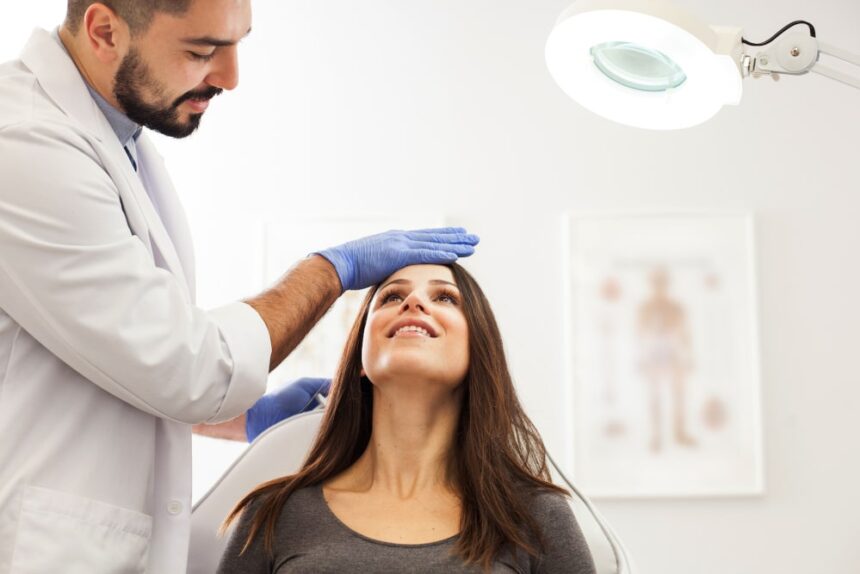Understanding Rhinoplasty and Its Importance
Rhinoplasty, commonly known as a nose job, is a highly sought-after cosmetic and reconstructive procedure that enhances both the aesthetic and functional aspects of the nose. Rhinoplasty in Abu Dhabi utilizes advanced surgical techniques to achieve precision, natural results, and improved nasal functionality.
The Evolution of Rhinoplasty Techniques
Modern rhinoplasty has evolved significantly from traditional surgical methods. With technological advancements, surgeons now perform highly sophisticated procedures that ensure minimal discomfort and optimal recovery. These advanced techniques focus on preserving the natural structure of the nose while improving its shape and functionality.
Open vs. Closed Rhinoplasty
Open Rhinoplasty
This technique involves making an incision on the columella, the small strip of skin between the nostrils. The open approach provides enhanced visibility and precision, allowing for detailed modifications to the nasal structure. It is ideal for cases requiring significant reshaping.
Closed Rhinoplasty
Closed rhinoplasty, performed with incisions inside the nostrils, eliminates visible scarring and reduces recovery time. This technique is preferred for minor corrections and individuals seeking subtle nasal enhancements.
Preservation Rhinoplasty
Preservation rhinoplasty is a revolutionary approach that focuses on maintaining the natural anatomy of the nose. Instead of removing cartilage and bone, the procedure involves reshaping existing structures to enhance the nose’s appearance while ensuring long-term stability. This method results in a more natural look with reduced swelling and faster healing.
Ultrasonic Rhinoplasty for Precision
Ultrasonic rhinoplasty is one of the most advanced techniques available today. Using high-frequency sound waves, this method precisely sculpts the nasal bones without damaging surrounding tissues. It provides enhanced accuracy, minimizes trauma, and significantly reduces the risk of irregularities.
Structural Rhinoplasty for Nasal Support
Structural rhinoplasty focuses on reinforcing the nasal framework. Cartilage grafts are used to strengthen weak nasal structures, ensuring long-term support and durability. This technique is highly beneficial for individuals with previous nasal surgeries or congenital deformities.
Functional Rhinoplasty for Improved Breathing
Beyond aesthetics, rhinoplasty also serves a functional purpose. Functional rhinoplasty is designed to correct breathing difficulties caused by structural abnormalities. It addresses issues such as a deviated septum, nasal valve collapse, and airway obstructions, ensuring both aesthetic appeal and improved respiratory function.
Tip Refinement Techniques
Refining the nasal tip is a crucial aspect of rhinoplasty. Advanced methods focus on reshaping and repositioning cartilage to create a balanced, proportionate nasal tip. The use of sutures and grafting techniques ensures a natural and refined look.
Ethnic Rhinoplasty for Natural Harmony
Ethnic rhinoplasty is tailored to preserve the unique nasal characteristics of different ethnicities while enhancing overall facial harmony. This technique considers anatomical differences and cultural aesthetics, ensuring results that complement the patient’s features.
3D Imaging and Simulation in Rhinoplasty
Modern technology has introduced 3D imaging and simulation tools that allow individuals to visualize their expected results before undergoing surgery. These advanced systems enable surgeons to plan procedures with precision, ensuring patient satisfaction and realistic outcomes.
Cartilage Grafting Techniques
Cartilage grafting plays a vital role in rhinoplasty. Depending on the case, cartilage can be harvested from the septum, ear, or ribs to provide structural support and refine nasal contours. This technique is essential for reconstruction and revision rhinoplasty cases.
Revision Rhinoplasty for Correcting Previous Surgeries
For individuals dissatisfied with a previous nose job, revision rhinoplasty offers a solution. This procedure corrects complications from past surgeries, restoring both function and aesthetics. It requires advanced expertise due to the complexity of altered nasal structures.
Nasal Bridge Refinement
Refining the nasal bridge enhances overall facial harmony. Techniques such as dorsal hump reduction and bridge augmentation are used to create a smooth, well-balanced profile. Surgeons employ specialized tools to reshape the bridge while preserving its natural integrity.
The Role of Piezoelectric Technology
Piezoelectric technology is a game-changer in modern rhinoplasty. Unlike traditional methods, this technique utilizes ultrasonic vibrations to refine nasal bones with precision, minimizing trauma and reducing recovery time. It is particularly effective in cases requiring delicate bone reshaping.
Rhinoplasty and Facial Harmony
A well-executed rhinoplasty does not just enhance the nose; it also improves overall facial balance. Advanced techniques ensure that nasal modifications complement other facial features, creating a harmonious and proportionate appearance.
Recovery and Post-Surgical Care
Advanced rhinoplasty techniques have significantly improved recovery experiences. With minimally invasive methods, patients can expect reduced swelling, faster healing, and enhanced comfort. Following a well-structured aftercare routine ensures long-lasting and satisfying results.
Conclusion
Rhinoplasty in Abu Dhabi has evolved with cutting-edge techniques that prioritize precision, aesthetics, and functionality. From ultrasonic and preservation rhinoplasty to structural enhancements and revision procedures, modern advancements ensure exceptional results. Whether for cosmetic refinement or functional correction, these innovative techniques provide personalized solutions tailored to individual needs.
FAQs
How long does it take to recover from advanced rhinoplasty?
Recovery varies depending on the technique used, but most patients experience significant improvement within two weeks. Complete healing and final results may take several months.
Is ultrasonic rhinoplasty better than traditional methods?
Ultrasonic rhinoplasty offers greater precision and minimizes trauma, making it an excellent choice for detailed nasal refinements. However, the best technique depends on individual needs.
Can rhinoplasty improve breathing issues?
Yes, functional rhinoplasty is designed to correct structural abnormalities that obstruct airflow, improving overall breathing and nasal function.
Will my results look natural after rhinoplasty?
Advanced techniques focus on preserving natural anatomy and enhancing facial harmony, ensuring results that blend seamlessly with your features.
Who is a suitable candidate for advanced rhinoplasty?
Ideal candidates include individuals seeking cosmetic improvements, functional corrections, or revisions from previous surgeries. A consultation with a specialist helps determine the best approach for each case.


